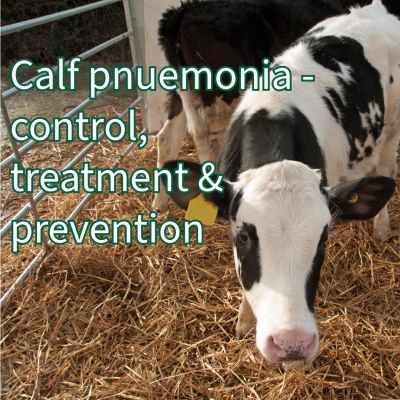
Posted By:
At Shepton Vets, the well-being of your livestock is our utmost priority. With the current warm and wet weather, we find it crucial to address a prevalent concern among farmers – pneumonia in calves. While this condition can emerge as a challenge, timely identification and treatment are key. In this article, we delve into the prevention and treatment of pneumonia in calves, offering insights and strategies to safeguard your herd's health.
To find the cause of pneumonia with the current warm and wet weather, it is important to be looking out for pneumonia cases in calves and identifying and treating them promptly.
Prevention:
Start with good colostrum management –
ensuring every calf receives enough good quality colostrum will provide its immune system with early defence against pathogens found on your farm.
Colostrum can be tested with a brix refractometer, the target is >22%.
Each calf should receive at least 10% of its bodyweight in colostrum.Ensure the calves have good nutrition so they have enough energy to enable their immune system to develop. This can be monitored with the Nottingham Calf Calculator - speak to your routine vet for more information on how to do this.
Environmental conditions in both calving pens and calf pens are key – deep, clean and dry bedding with adequate ventilation and no draughts, appropriate stocking density and airflow blowing from the youngest to the oldest calves.
We recommend mucking out calf pens and calving pens monthly.
We can use the calf nesting score to check bedding depth. Score 1 = calf legs fully visible, score 2 = legs partially visible and score 3 = legs fully covered.
Calf stocking density should ideally be 3m2 per calf.Isolate sick calves promptly and quarantine bought in calves.
Vaccination of calves from 10 days old with Bovalto intranasal or from 2 weeks old with Bovalto Respi 3. This should be in combination with all of the above.
Treatment:
Early identification of pneumonia cases is key to the success of treatment. You should be checking calves at least twice daily. If you are concerned about a calf, you can use the Wisconsin Calf Health Scoring Chart which looks at rectal temperature (>39.5? C is high), coughing, nasal discharge, ocular discharge and ear position.
NSAIDs are just as important as antibiotics in the treatment of pneumonia. It is vital to dose to an accurate weight – use a weigh band or electronic scales. Speak to your vet to create a pneumonia treatment protocol including first- and second-line antibiotic choice.
Remember that calves affected by pneumonia can suffer from chronic lung damage and in future are more susceptible to re-infection, especially during a period of stress e.g. first calving.
- Vet Anna Hewison
In the realm of livestock management, vigilance and proactive measures are essential. Pneumonia in calves can have far-reaching consequences if not managed promptly. Through our shared commitment to responsible farming practices, we can mitigate the risks, ensuring the health and welfare of your animals. At Shepton Vets, we stand by your side, offering experience and support to address challenges and maintain the well-being of your livestock.
Whilst on my visits I have been having several discussions...
As our feline friends get older there are a few conditions...
Another winter discussion group season is now behind...
©2024 Shepton Veterinary Group Ltd., All rights reserved.
Privacy Policy • Terms & Conditions • Cookie Policy